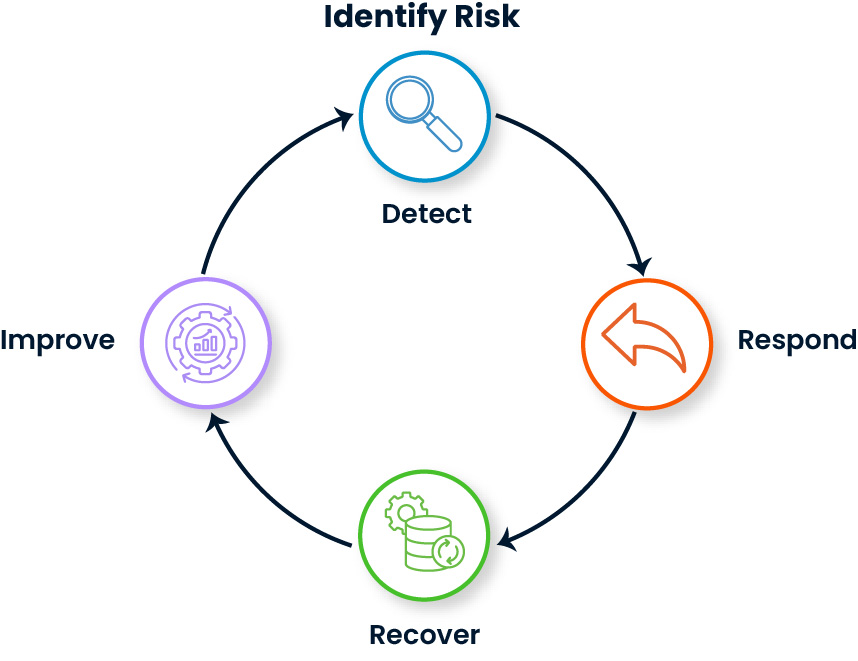
Imagine arriving at work one morning and finding that you cannot access the systems, the network connection is down, or a critical application is not responding. As the minutes pass, complaints to customer service increase, teams panic, and the workflow comes to a standstill. At this point, the answer to the question of what incident management is becomes critical.
The incident management process aims to take swift action in the face of such unexpected interruptions, investigate the root cause, and restore the service to its previous quality. If this process is not executed correctly, SLA management cannot be properly implemented, and increased costs and customer dissatisfaction become inevitable. However, effective incident management does not merely address problems; it also ensures transparent management of service requests, meets stakeholder expectations, and makes IT service management more sustainable.
What Are the Advantages of Incident Management?
One of the most important answers to the question of what incident management is for an organization is that it ensures operational continuity by minimizing the impact of unexpected interruptions. Incidents can slow down projects, increase costs, and negatively impact the customer experience. An effective incident management process turns these risks into opportunities and provides the organization with many advantages:
- Increased efficiency and team productivity
For example, when an interruption in the email system is quickly resolved, sales and customer support teams can continue their work where they left off.
- Prevention of future incidents
When a server error is resolved through root cause analysis, similar failures are prevented from recurring.
- Reduced downtime
When an issue with the payment infrastructure on an e-commerce site is resolved within minutes through incident management, lost sales are minimized.
- Improved customer experience
Even if call center systems experience an outage, customers receive service without waiting thanks to rapid intervention.
- Visibility and transparency within the organization
Reporting all incidents on a single platform allows managers to easily answer the question, “How long did it take to resolve the issue?”
- Smooth business operations
Critical applications are continuously monitored to minimize unexpected disruptions, ensuring operations continue without interruption.
What is Incident Management? What are the Process Steps?
An incident management system is a structured approach followed to quickly detect, manage, and minimize the impact of disruptions occurring in an organization’s IT infrastructure or services.
To provide a clearer answer to the question of what is incident management, this process begins with identifying critical assets and potential risks, and then taking the necessary measures to ensure the security and availability of these assets.
- Incidents are detected early, and anomalies are proactively reported by the system; thus, interruptions can be addressed before they affect the customer, and the correct problem management process is ensured.
- A detected incident is directed to the appropriate team according to the priority matrix and SLA (service level agreement) times and is responded to quickly, minimizing the impact.
- The root cause of the incident is analyzed to produce permanent solutions, and processes are improved to prevent similar situations from recurring.
All these steps ensure that incident management is implemented within the organization not only as a technical intervention but also as an operational strategy, forming the basis of the lifecycle.

Respond to Incidents Faster with SPIDYA ITSM!
1. Identifies Risks & Protects Assets
SPIDYA IT Service Management automatically classifies critical systems and services within incident management. It identifies the greatest risks through impact-priority analysis and prioritizes protective measures.
2. Detects Incidents
Systems are continuously monitored; abnormal behavior is captured through alarm mechanisms, log analysis, and automated notifications. Outages are detected before they impact customers.
3. Responds & Prioritizes
Automatically routes incidents to the right teams based on SLA timelines and priority matrices. Enables faster response to critical incidents.
4. Recovers & Resolves
Post-incident root cause analysis is performed. Permanent improvements are implemented instead of temporary fixes. Problem management prevents recurrence of similar incidents.
5. Continuously Improves
Processes are monitored with transparency, reporting, and SLA compliance. The SPIDYA ITSM & Incident Management module not only solves problems but also advances service quality with every cycle.
To see how features such as automatic logging, smart routing and SLA compliance in incident management add value to businesses, visit our SPIDYA ITSM & Incident Management page!




